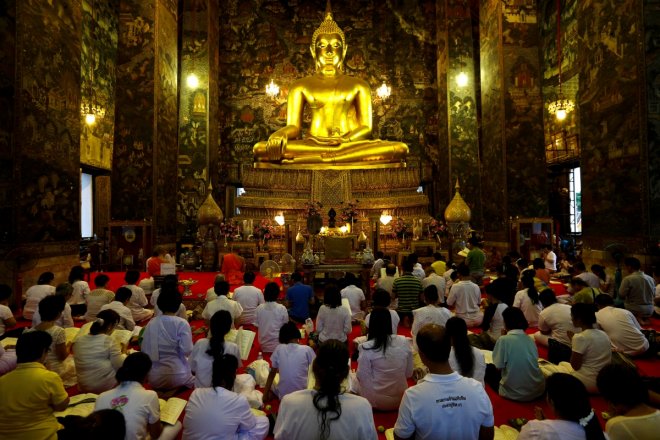
Vesak, one of the most important days in the Buddhist calendar, is observed every year in May or early June. Buddhists around the world celebrate Vesak Day, which is also known as "Buddha Day" as it commemorates the birth, enlightenment and death of the Buddha, Siddhartha Gautama. According to Buddhist scriptures, each of these significant events occurred on the full moon of the Indian lunar month of Vesakha.
Every year, the day of the festival depends on the country or culture. However, the exact date of Vesak is based on the Asian lunisolar calendars. This year, Vesak will be celebrated on 10 May. The festival is normally celebrated in Vaisakha month of the Buddhist and Hindu calendars, hence the name Vesak.
Different country follows different traditions of Vesak, but the oldest tradition of Vesak is to celebrate all three events. However, some modern Buddhist groups celebrate just the birth, and others, the enlightenment.
What is the significance of Vesak?
Siddhartha Gautama became the Buddha through his realisation of full enlightenment, a state which is also known as nirvana in Sanskrit, or nibbana in Pali, the language of many of the earlier extant Buddhist scriptures. The term Buddha is not a name but a title, which can be translated as the "Enlightened One".
Once enlightenment is achieved, all hatred and greed is extinguished. Thus, there is no more rebirth. Buddha achieved the state of nirvana and this is celebrated on Vesak Day. Buddhists usually don't refer to the death of Buddha, but, to his passing into nirvana or nibbana.

In Buddhism, death means rebirth rather than signifying the end of life. However, it differentiates it from reincarnation because Buddhism does not recognise a self or soul that is continually reappearing in a new form.
According to old theories, Buddha himself guided his followers on how to pay homage to Vesak. Before he died, he saw his faithful attendant Ananda weeping. He advised him not to cry, but to understand the universal law that all compounded things – including his body – must disintegrate. He advised his followers to regard his teachings, "The Dharma" as their teacher from then on and to celebrate Vesak by leading noble lives, showing kindness and bringing peace and harmony to humanity.

How is Vesak observed?
Each Buddhist culture has its own traditions for celebrating Vesak. Sri Lanka celebrates Vesak by lighting colourful lanterns and displays depicting the life of the Buddha. Meanwhile, in Taiwan, people pour fragrant water over statues of the Buddha. In Singapore, caged birds are set free.
Vesak celebration means making an effort to bring happiness to the unfortunate, including the aged, the handicapped and the sick. Temples are adorned with flowers and decorations and some devotees perform charitable acts such as donating money or gifts to the poor.
Devout Buddhists will try to attend their local temple for part of the day, although some attend for the full day. Some bring supplies for the temple and symbolic offerings for the shrine. Meditation, chanting and listening to sermons takes place.









